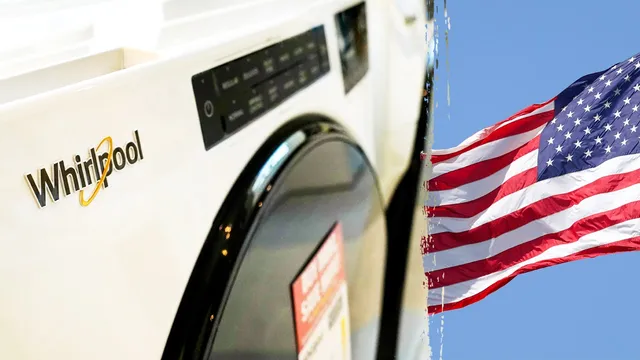
Whirlpool pledges major investment for U.S. factories
2025-06-19 10:58- Whirlpool is committed to expanding domestic production and enhancing the U.S. supply chain.
- CEO Marc Bitzer announced plans for new investments, particularly in automation and factory updates.
- The company's focus on U.S. sourced steel reflects its strategic importance for the future of manufacturing.
Express your sentiment!
Insights
Whirlpool, a major appliance manufacturer based in the United States, has announced its commitment to enhancing local production within the American economy. This declaration follows a slight miss in their Q1 2025 earnings projections, highlighting their proactive approach amid challenging market conditions. CEO Marc Bitzer emphasized the advantages of domestic production in light of recent tariffs and a more attractive business case for U.S.-made goods. He mentioned that current manufacturing runs at only 60% capacity, underscoring the need for greater factory volume for improved profitability. In response, Whirlpool plans to introduce new products affecting a significant portion of their inventory and invest more in automation and factory upgrades. The CEO pointed out that this strategic shift not only involves creating new capital investment products but also focuses on the integration of U.S. sourced steel—a key component in their manufacturing process, which currently relies on 96% American-sourced steel. Bitzer underscored the importance of strong U.S. steel production, suggesting that it is vital for the future of the industry and the country as a whole. With vertical integration at the forefront of their strategy, Whirlpool aims to benefit U.S. factories and consumers alike through these moves, positioning themselves as a 'net winner' in the current market landscape. This investment plan symbolizes a significant step towards revitalizing American manufacturing and improving the supply chain within the United States, particularly as the company navigates through ongoing economic challenges.
Contexts
The impact of tariffs on U.S. manufacturing has been a critical topic in economic discussions, particularly as trade policies have evolved over the past few years. Tariffs, as a form of taxation on imported goods, are intended to protect domestic industries from foreign competition and promote local production. They can provide temporary relief and financial support to U.S. manufacturers by making foreign products more expensive, leading domestic consumers to buy American-made goods instead. However, the implications of these tariffs have proven to be complex, shaping not only the landscape for manufacturers but also affecting consumers, supply chains, and the broader economy. In the short term, tariffs can indeed benefit certain sectors of U.S. manufacturing by shielding them from foreign competition and incentivizing local investment. For example, industries such as steel and aluminum have experienced an uptick in production and jobs as foreign imports were curtailed. However, these protective measures can lead to inefficiencies, as domestic firms may have less incentive to innovate or cut costs when they are shielded from international competition. Over time, the lack of competition could result in higher prices for consumers and potential stagnation within the protected industries. Moreover, the broader implications of tariffs extend beyond individual sectors. Increased tariffs on imports can lead to retaliatory measures from other countries, escalating trade tensions and potentially leading to a trade war. Such conflicts often hurt U.S. manufacturers that rely on exports, as tariffs can decrease their competitiveness in global markets. Additionally, tariffs can disrupt established supply chains, forcing manufacturers to reconsider their sourcing strategies and potentially leading to increased costs that are ultimately passed down to consumers. The resulting volatility can create a challenging economic environment for U.S. manufacturers, complicating their forecasting and strategic planning efforts. In summary, while tariffs may offer immediate benefits to certain sectors within U.S. manufacturing by supporting domestic production and preserving jobs, they also carry long-term risks that cannot be overlooked. The trade-offs associated with engaging in protectionist policies highlight the delicate balance that policymakers must strike between protecting domestic industries and fostering an environment conducive to growth and innovation. As the U.S. navigates the complexities of international trade, it is crucial to carefully consider the implications of tariffs on the broader manufacturing landscape, ensuring that policies enacted support sustained economic performance without compromising competitiveness.